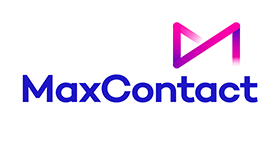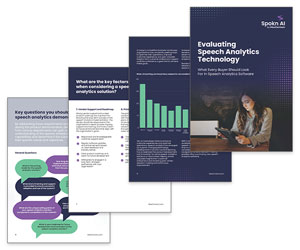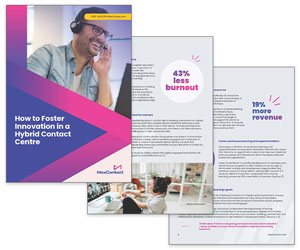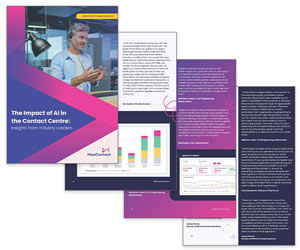MaxContact discusses the benefits, challenges and key features of Contact Centre as a Service (CCaaS) and how it enables businesses to provide exceptional customer service.
Delivering Exceptional Customer Service in the Cloud
Customer expectations are at an all-time high and your contact centre is undoubtedly feeling the pressure.
When communicating with companies, customers demand availability across multiple channels, and they want quick, efficient service.
Traditional on-premise call centres, with their siloed operations and limited multichannel options, may find themselves struggling to keep up with customer expectations.
This is where Contact Centre as a Service (CCaaS) steps in. A solution for businesses of all sizes, CCaaS is a cloud-based solution that supports exceptional customer service, even as demand grows.
So What Is CCaaS & How Exactly Does It Work?
Imagine a contact centre that doesn’t require bulky hardware or complex setup. Contact Centre as a Service delivers all the functionalities of a traditional contact centre, minus the hassle.
Your agents can manage inbound and outbound communications – phone calls, emails, texts, web chats, and even social media messages – all on a single, unified platform.
CCaaS vs Traditional Call Centres: What’s the Difference?
| Feature | Traditional Call Centre | CCaaS |
|---|---|---|
| Channels Supported | Voice Only | Voice, Email, SMS, Chat, Social Media |
| Scalability | Limited | Highly Scalable |
| Features | Basic | Advanced: Automatic Call Detection (ACD), Interactive Voice Response (IVR), Analytics, Automation |
| Deployment | On-Premise | Cloud-Based |
| Cost | High (Hardware, Software, Maintenance) | Cost-Effective (Pay-as-you-go) |
As you can see, Contact Centre as a Service delivers flexibility and scalability in abundance – and the benefits don’t stop there.
Let’s Consider the Benefits of CCaaS in More Detail
There’s a reason why CCaaS is the go-to solution for BPO contact centres and businesses that rely on contact centre operations.
Cost-Effectiveness
Buying, maintaining and replacing hardware and software can be expensive. CCaaS operates on a pay-as-you-go model, which means that you only pay for the features and capacity you need.
Scalability & Flexibility
As your business and operations grow, so can your CCaaS solution. A cloud-based solution means that you can add or remove features and users to meet the needs of your business.
Enhanced Customer Experience
Your customers want to contact you on their preferred channels, whether that be phone, email, SMS or social media. CCaaS provides omnichannel support, allowing customers to connect easily.
What’s more, real-time analytics and AI tools empower you to proactively address customer issues and personalise interactions, providing a better customer experience all round.
Boosted Agent Productivity
CCaaS comes with features that help to boost agent productivity. It means that agents can automate repetitive tasks and be more prepared, thanks to advanced tools like call recording and quality management. This frees them up to focus on resolving complex customer issues, maximising their output.
Improved Security & Reliability
Data security is a major concern. Leading CCaaS providers prioritise data security and infrastructure redundancy. This gives complete peace of mind and keeps your operations running smoothly.
Faster Access to New Features
With new technology constantly emerging, it’s important to have a set-up that allows you to adopt new features quickly and easily – especially if you want to maintain a competitive edge.
Cloud-based deployment allows for quicker adoption of cutting-edge features like generative AI.
What Challenges Does Contact Centre as a Service Solve for Your Business?
The power of CCaaS lies in the feature-rich environment that it creates. Let’s explore some key functionalities and how they benefit your operations.
Omnichannel
The Problem: I want to give customers omnichannel options without a siloed service.
The Solution: CCaaS omnichannel features provide a unified platform for managing all channel interactions.
So, if a customer starts their enquiry through a chat window but needs to escalate to a phone call, the agent has access to the entire conversation history, allowing for a smooth and personalised transition.
Automatic Call Distribution (ACD)
The Problem: I want to reduce caller frustration by reducing waiting times and making sure enquiries are dealt with efficiently.
The Solution: ACD intelligently routes incoming calls to the most qualified available agent based on factors like skills, workload and language.
This not only improves customer satisfaction by reducing wait times, but also ensures agents spend their time resolving issues they’re best equipped to handle.
Interactive Voice Response (IVR)
The Problem: I want to solve simple enquiries more efficiently to free up agents for more complex interactions.
The Solution: IVR acts as your virtual assistant, enabling customers to self-serve if they have a common enquiry.
An IVR system can guide them through the process using voice prompts, keypad selections and in some cases spoken requests, freeing up agents for more complex issues.
Workforce Management
The Problem: I need to tackle inefficient agent scheduling and resource allocation.
The Solution: Workforce management tools optimise your agent team’s performance in many ways. Create schedules that consider agent skills, availability, and projected call volume.
Monitor metrics like call handling time, resolution rates, and customer satisfaction to identify areas for coaching and improvement.
And, plan for call volume fluctuations and make sure you have the right resources in place to meet customer demands.
Contact Centre Reporting & Dashboards
The Problem: I have limited visibility into contact centre performance, making it difficult to benchmark KPIs
The Solution: Comprehensive reporting and analytics dashboards provide valuable insights into various aspects of your contact centre’s performance.
You can track key metrics like call volume, average handle time (AHT) and first call resolution (FCR). By analysing these reports, you can gain a clear understanding of your contact centre’s strengths and weaknesses, and make data-driven decisions to optimise your operations.
The Power of Integration
While each CCaaS feature offers individual benefits, the true strength of these features lies in integration.
With CCaaS, it is easy to integrate features with other critical business systems like CRM, workforce management, and reporting tools.
This creates a unified ecosystem for managing your customer interactions and your contact centre operations as a whole.
Here is an overview of the data you can leverage through these integrations:
CRM Integration
Imagine an agent assisting a customer with an order issue. With CRM integration, the agent can access the customer’s account information, purchase history, and past interactions – all within the CCaaS interface. This allows for a more personalised and efficient service experience.
Workforce Management Integration
Data from your CCaaS platform can automatically populate your workforce management system, simplifying scheduling and agent performance tracking.
Reporting Integration
Consolidate data from multiple sources – CCaaS, CRM, workforce management – into a single reporting dashboard. This holistic view empowers you to make data-driven decisions based on your entire operation.
By integrating your CCaaS solution with these critical systems, you create a streamlined and data-driven approach, ultimately leading to happier customers and a more efficient contact centre.
How Does CCaaS Boost Outbound Performance?
CCaaS benefits both inbound and outbound operations. For outbound operations like sales and debt collection, CCaaS features can become integral tools for hitting KPIs.
Contact centres with a sales focus, for example, can rely on workforce management tools to ensure agents with the right skills are calling prospects at the right time.
Better still, CRM integration means that those agents have all the information they need to establish personalised interactions, building rapport and automating workflows for faster sales cycles. Valuable customer data can also help tailor sales pitches for better conversion rates.
It’s not just sales functions that benefit from CCaaS either. Let’s take debt collection functions, another industry where outbound activity is important.
For debt collection agents, predictive dialling maximises contact with the right people, while call recording ensures adherence to regulations.
Furthermore, smart scheduling based on call volume and debtor behaviour, combined with skills-based routing, keeps agents productive.
PCI-DSS compliant payment processing through CCaaS integrations streamlines collections to boost cost per collection rates, while payment IVR gives customers an accessible self-serve option.
Finally, CRM integrations empower agents with a complete debtor view, enabling personalised communication strategies that improve collection rates and encourage a more positive experience for debtors.
CCaaS Future-Proofs Your Business
Adopting CCaaS isn’t just about modernising your contact centre; it’s also about setting up your business for the future.
The adaptability of CCaaS allows you to position your business to leverage the ever-growing potential of AI.
Over the last few years, AI has already transformed contact centre operations:
AI-Powered Chatbots
These virtual assistants handle basic enquiries and requests, freeing up human agents for more complex issues.
They can even leverage natural language processing to understand and respond to customer questions in a natural way, providing a 24/7 self-service option for your customers.
Automatic Call Routing
AI analyses incoming calls, identifying the caller’s intent and urgency. It then routes them to the most qualified agent based on factors like skills, language, and availability.
This ensures faster resolution times and a more efficient use of agent resources.
Speech Analytics & Sentiment Analysis
AI can analyse the tone and emotion in a customer’s voice in both spoken or text interactions. This allows agents to tailor their communication style and identify potential escalations before they happen, leading to a more positive customer experience.
Predictive Analytics
AI can analyse historical data to forecast future call volume and customer behaviour. This empowers you to proactively schedule agents and resources, ensuring you’re always prepared to meet customer demand.
These are just a few examples of how AI is already shaping the future of CCaaS. As AI technology continues to develop, we can expect even more innovative features and functionalities to emerge, further transforming the customer service landscape.
By embracing CCaaS now, you’re ensuring your business is ready to capitalise on these future advancements and not fall behind.
This blog post has been re-published by kind permission of MaxContact – View the Original Article
For more information about MaxContact - visit the MaxContact Website
Call Centre Helper is not responsible for the content of these guest blog posts. The opinions expressed in this article are those of the author, and do not necessarily reflect those of Call Centre Helper.
Author: MaxContact
Published On: 2nd Aug 2024 - Last modified: 22nd Oct 2024
Read more about - Guest Blogs, MaxContact






 MaxContact is customer engagement software that goes above and beyond to build smarter customer experiences. Our platform is packed with powerful features, accessible for businesses large and small, and ensures organisations can operate compliantly.
MaxContact is customer engagement software that goes above and beyond to build smarter customer experiences. Our platform is packed with powerful features, accessible for businesses large and small, and ensures organisations can operate compliantly. 































